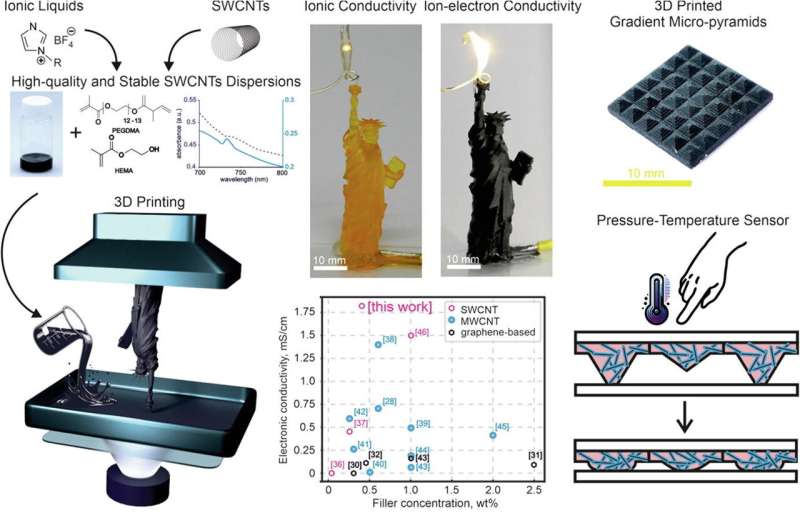This article has been reviewed according to Science X's editorial process and policies. Editors have highlighted the following attributes while ensuring the content's credibility:
fact-checked
peer-reviewed publication
trusted source
proofread
New soft multifunctional sensors mark a step forward for physical AI

Researchers at Ben-Gurion University of the Negev's Physical AI (PAI) Lab, led by Dr. Aslan Miriyev, have developed multifunctional material-sensors that emulate the complex capabilities of natural systems, advancing the field of physical AI.
Unlike digital AI, which focuses on computation and data processes, physical AI (PAI) combines physical structures with computational intelligence to create lifelike, autonomous soft robots capable of dynamic interactions with their environment. Multifunctionality is a core feature of PAI, akin to the multifaceted roles of various natural organs and components.
Traditional approaches to creating synthetic multifunctional devices have often resulted in incomplete sets of characteristics, making true bio-analogous performance elusive. The development of materials that can respond to different stimuli, their precise additive manufacturing, and the ability to process signals through different internal mechanisms are crucial for achieving this goal.
Dr. Miriyev's team has achieved a significant breakthrough by developing 3D-printable high mixed-ionic-electronic conductivity composite materials (ISMCs) that exhibit bio-analogous multifunctionality. ISMCs can transfer charges through both ions and electrons, allowing them to process diverse signals concurrently.
Made from high-conductivity ionogels and single-walled carbon nanotubes, these materials are precisely 3D-printable into complex shapes, making them ideal for creating versatile, soft multifunctional devices.
"These bio-analogous sensors have vast potential applications in fields requiring precise and multifunctional sensing capabilities," said Dr. Miriyev.
"The possibilities are extensive, from robotics, where they can contribute to more lifelike and responsive interactions, to health care, where they could be used in advanced diagnostic tools. Our ISMC-based precisely 3D-printable multifunctional sensors can significantly enhance how we approach sensory applications in various fields."
The findings were published in the Chemical Engineering Journal in an article titled "3D-Printable High-Mixed-Conductivity Ionogel Composites for Soft Multifunctional Devices."
The lead author, Dr. Sergey Nechausov, used imidazolium-based ionic liquids within a photopolymer matrix to achieve high ionic and electronic conductivity. The resulting ISMCs were showcased as multifunctional micro-pyramid pressure-temperature sensors with high sensitivity across broad temperature and pressure ranges.
"Thanks to the ISMCs' chemical composition and advanced photorheological behavior, we can precisely 3D-print multifunctional sensors of almost any shape," said Dr. Nechausov.
"Such sensors can operate under both AC and DC, and their ability to provide precise, distinct responses to multiple stimuli makes them highly versatile. Our sensors enable smart systems to interact with their environment in more complex and nuanced ways."
The researchers plan to refine these sensors further, exploring additional functionalities and improving their performance for a broader range of applications. Future developments include creating 3D-printable artificial skins and adding actuation capabilities to develop bodily intelligent soft systems for soft robotics, haptics, health care, and beyond. They also aim to integrate learning-based methods to control these sensory-motor systems, moving towards soft-robotic autonomy.
More information: Sergey Nechausov et al, 3D-Printable High-Mixed-Conductivity ionogel composites for soft multifunctional devices, Chemical Engineering Journal (2024). DOI: 10.1016/j.cej.2024.153759















